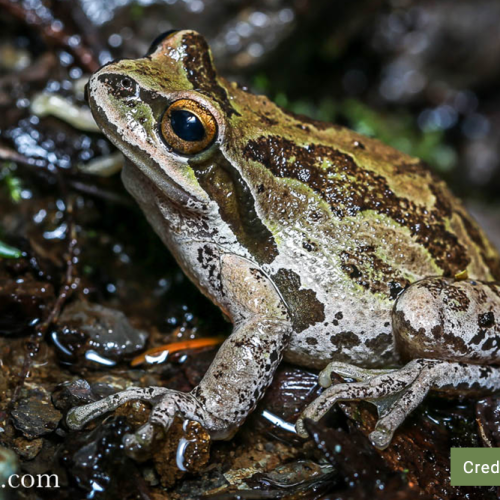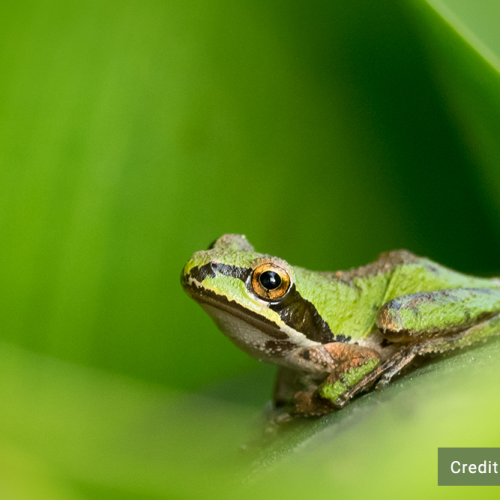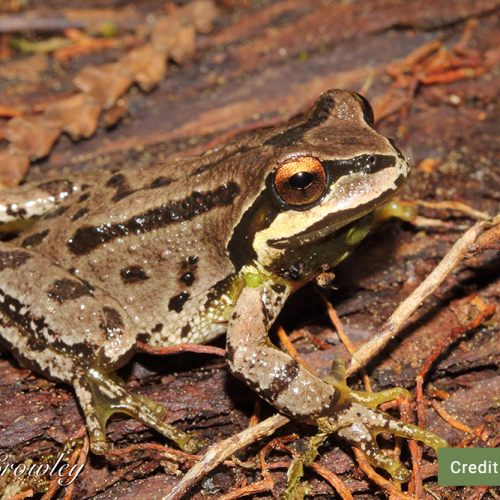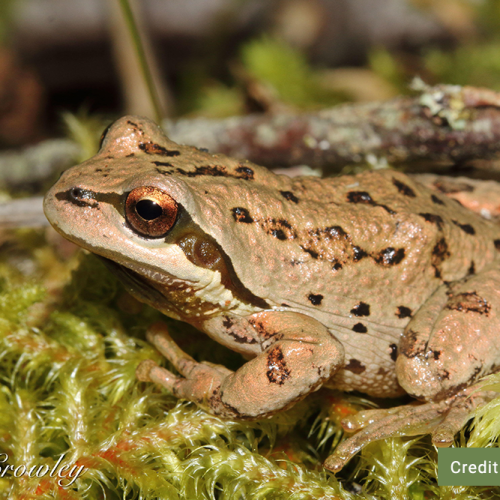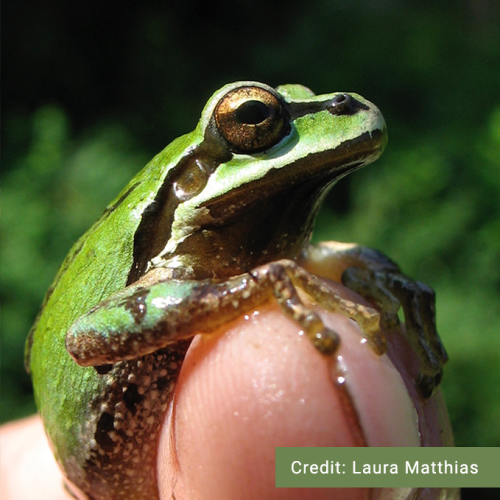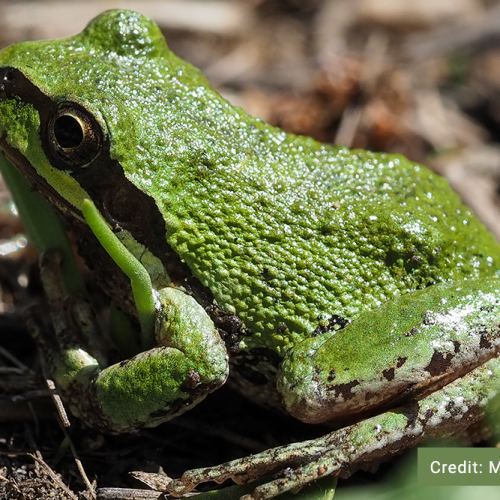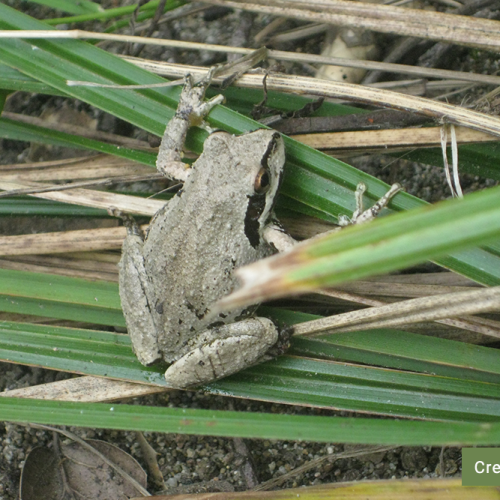Credit: Pourya Sardari
Pacific Treefrog
Pseudacris regilla
Description
Other names: Northern Pacific Treefrog, Pacific Chorus Frog, Western Chorus Frog, Hyla regilla
Listen to the Indigenous words for “frog” here!
Pacific Treefrog Call
Pacific Treefrog calls are the classic “ribbit”, and because of this their calls are often used in Hollywood movies. Pacific Treefrogs call year-round, but are particularly noticeable in the spring when breeding occurs. A variety of different calls have been documented.
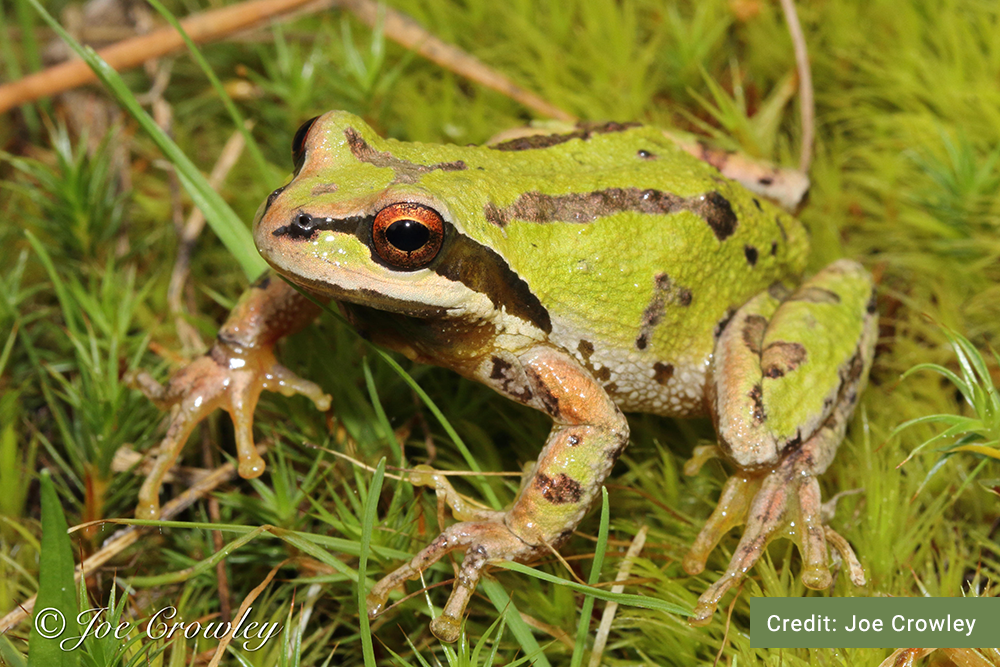
Pacific Treefrog Call
Pacific Treefrog calls are the classic “ribbit”, and because of this their calls are often used in Hollywood movies. Pacific Treefrogs call year-round, but are particularly noticeable in the spring when breeding occurs. A variety of different calls have been documented.
Similar Species
The Pacific Treefrog may be confused with the other species of treefrog in British Columbia, the Boreal Chorus Frog. The Pacific Treefrog can be distinguished from the Boreal Chorus Frog by its larger toe-pads, longer legs, and an eye stripe that ends at the shoulders as opposed to the groin. The two species can also be differentiated by location as their ranges do not overlap. The dark mask of the Pacific Treefrog can look like that of the Wood Frog, however, Wood Frogs lack toe pads and have distinct dorsolateral foldsDefinition:Visible raised ridges of skin that run down part of all of the length of the back, usually on the sides..
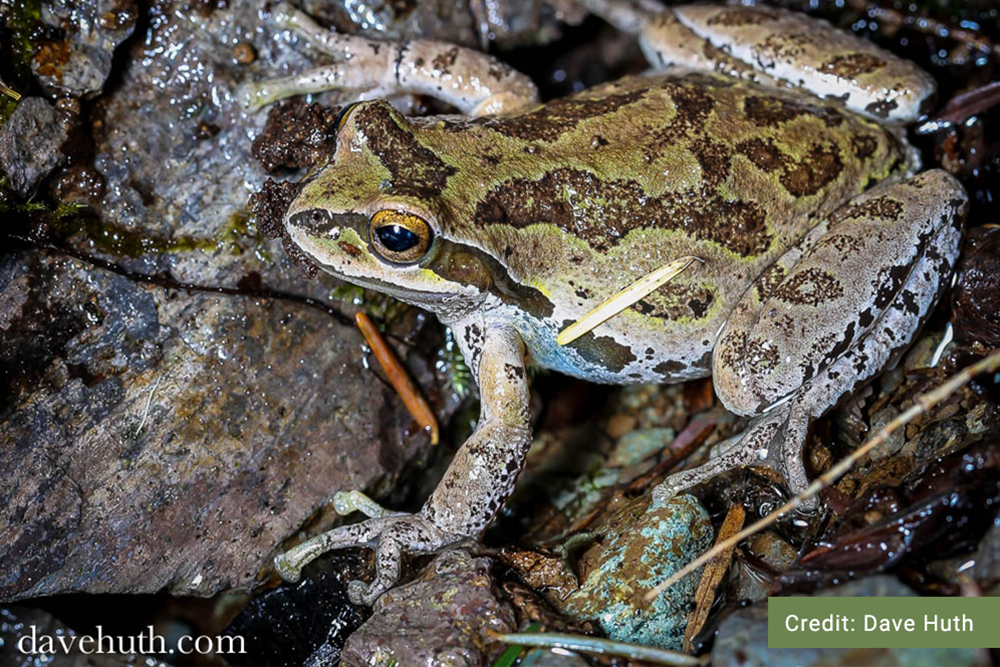
Pacific Treefrog
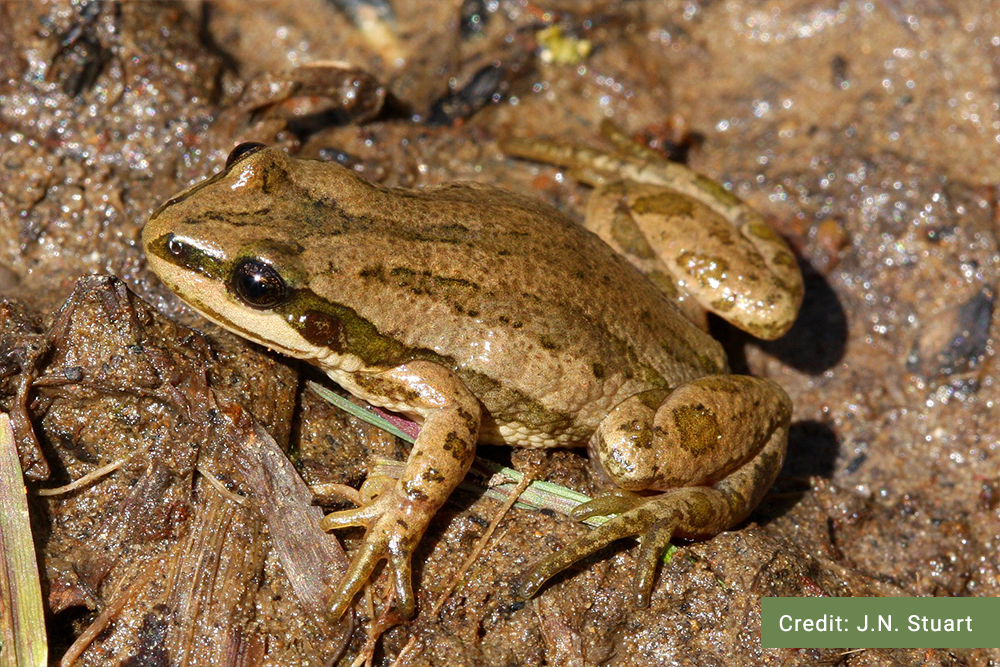
Boreal Chorus Frog
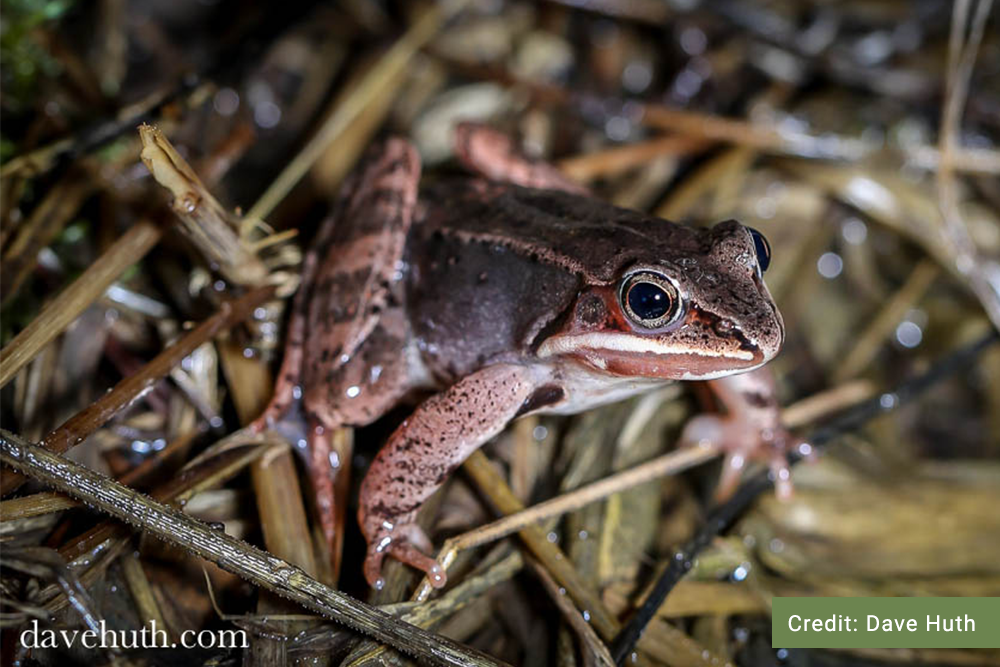
Wood Frog
Distribution
Habitat
Pacific Treefrogs are found in a variety of ecosystems, from deserts to grasslands to rainforests, from sea level to more than 3300 m. During the breeding season in British Columbia, Pacific Treefrogs prefer aquatic habitats that are devoid of fish and are usually found in shallow and often temporary wetlands, pools, ponds, and slow-moving creeks. They can sometimes be found in garden ponds, roadside ditches, and flooded forest service roads. In the non-breeding season, they can be found in a wide variety of habitats including wetlands, meadows, open woodlands, grasslands, rocky cliffs, talus, and pastures. As their name implies, Pacific Treefrogs can be found foraging in trees and shrubs, although most individuals tend to forage on the ground.
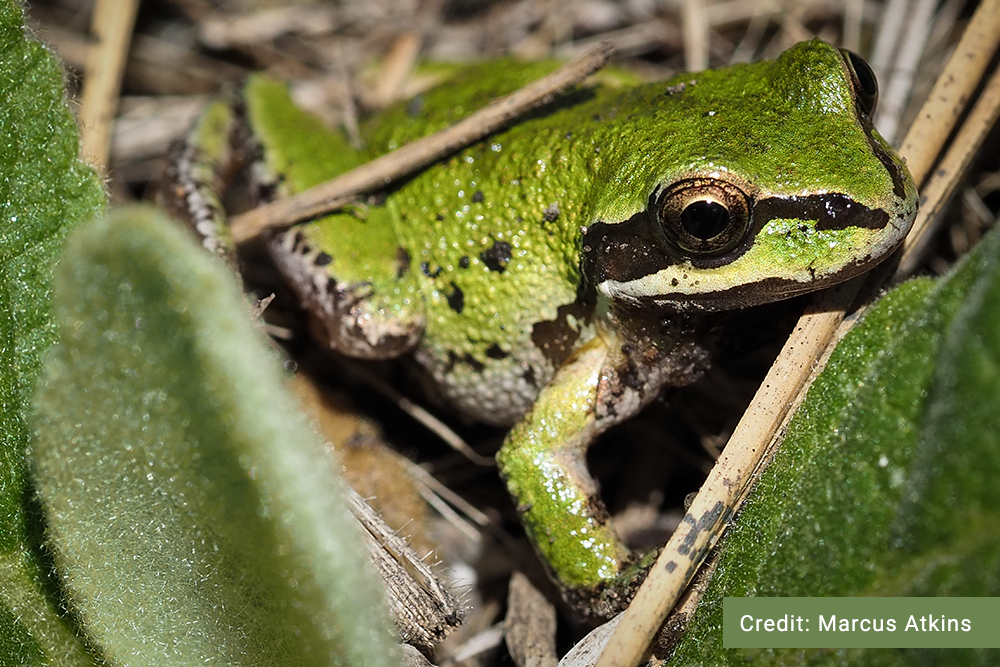
Reproduction
During the breeding season in early spring, males call to attract females. Fertilization in Pacific Treefrogs occurs externally. Males grasp the females from behind and on top in amplexusDefinition:The mating position of frogs and toads in which the male clasps the female about the back. and fertilizes small clusters of eggs attached to vegetation or leaf litter in shallow water. The female will lay up to 1,200 eggs in clusters of 5-120. The eggs are olive-brown on one side and yellow-cream on the other. Hatching occurs after approximately one month, and tadpoles undergo metamorphosis 2-3 months after hatching. Newly hatched frogs may be as small as 1 cm. Eggs and tadpoles often share ephemeral ponds with Long-toed Salamander larvae as temporary wetlands typically do not contain predatory fish and amphibians, such as American Bullfrogs, that require permanent water sources. Individuals reach sexual maturity the following year, and typically only mate once in their life, as they live to a maximum of three years, though they have lived up to 8 years in captivity.
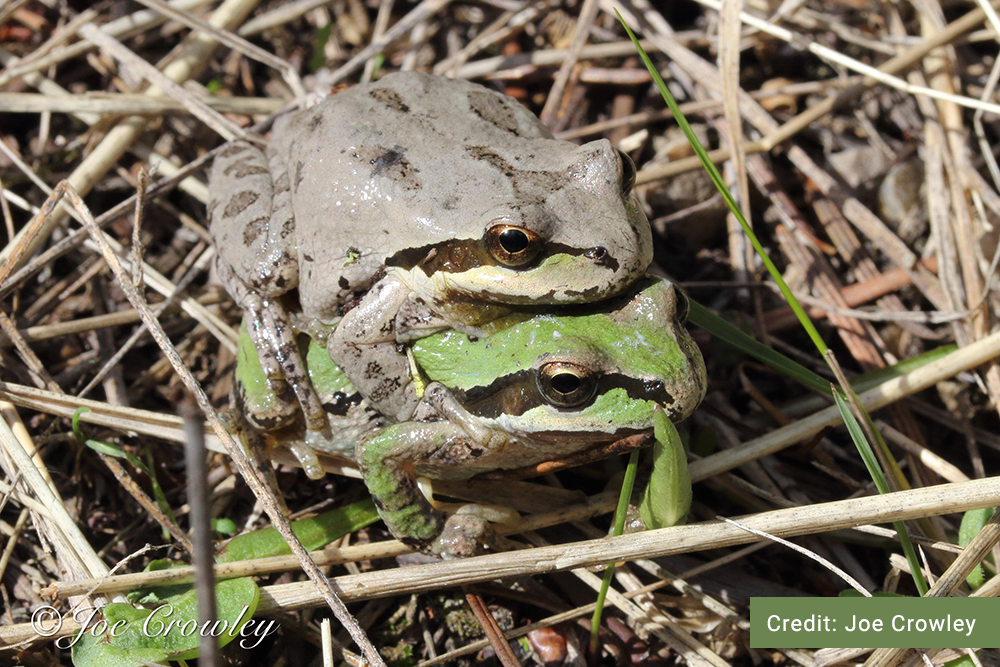
Diet
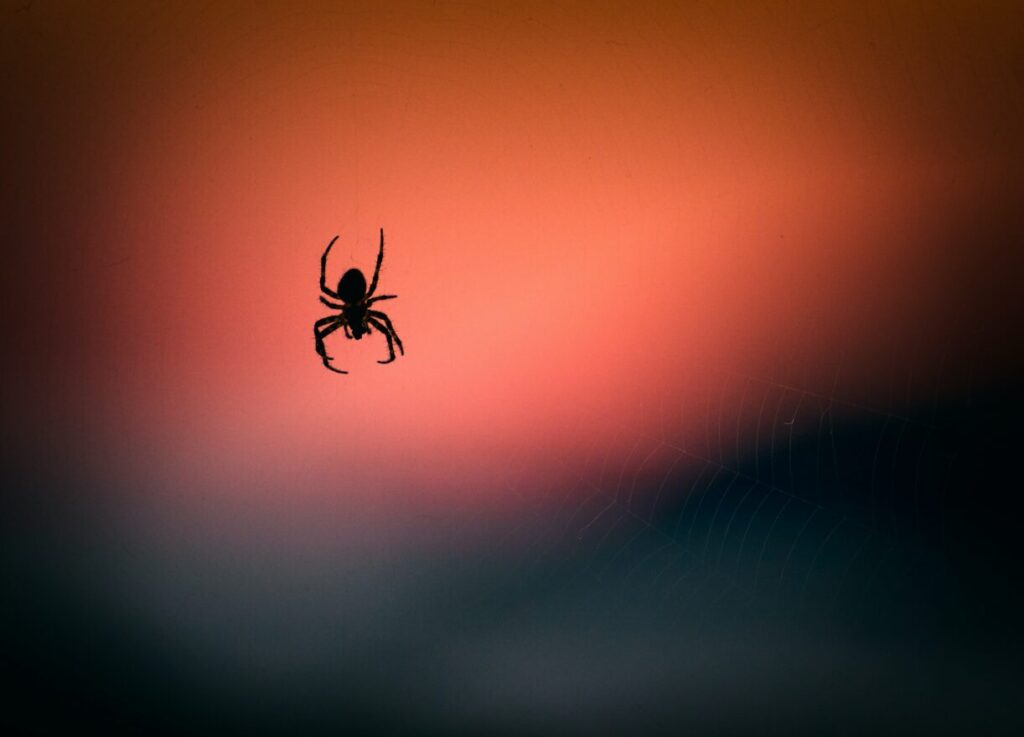
Conservation Status
Global: G5 (2016)
Provincial: S5 (2016)
BC List: Yellow
Learn more about conservation status rankings here
Threats
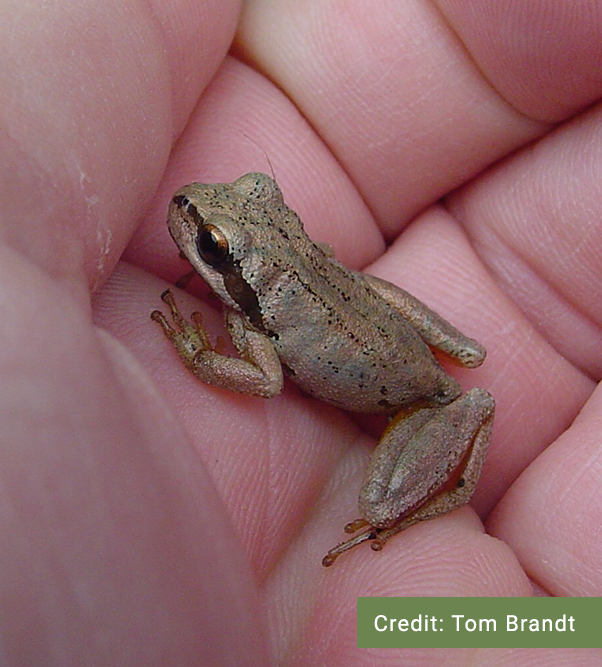
Did You Know?
Fact #1
Fact #2
Fact #3
Species Account Author: Marcus Atkins
Available:https://a100.gov.bc.ca/pub/eswp/ (accessed May 13, 2021).
British Columbia Ministry of Water, Land and Air Protection. 2002d. Pacific Tree Frog. B.C. Minist. Water, Land and Air Prot., Biodiv. Branch. 2pp
Case, S.M., P.G. Haneline, and M.F. Smith. 1975. Protein variation in several species of Hyla. Systematic Zoology 24: 281–295.
Jameson, D.L. 1957. Population structure and homing responses in the Pacific Tree Frog. American Society of Ichthyologist and Herpetologists. Copeia. 1957 No. 3 pp. 221–228.
Matsuda, B., D. M. Green, and P. T. Gregory. 2006. Amphibians and Reptiles of British Columbia. Handbook. Royal BC Museum, Victoria
http://linnet.geog.ubc.ca/efauna/Atlas/Atlas.aspx?sciname=Pseudacris%20regilla
https://www2.gov.bc.ca/gov/content/environment/plants-animals-ecosystems/wildlife/wildlife-conservation/amphibians-reptiles/amphibians-in-b-c/frogs-toads
http://www.canadianherpetology.ca/species/species_page.html?cname=Pacific%20Treefrog
https://amphibiaweb.org/
https://www.naturewatch.ca/frogwatch/pacific-treefrog/



